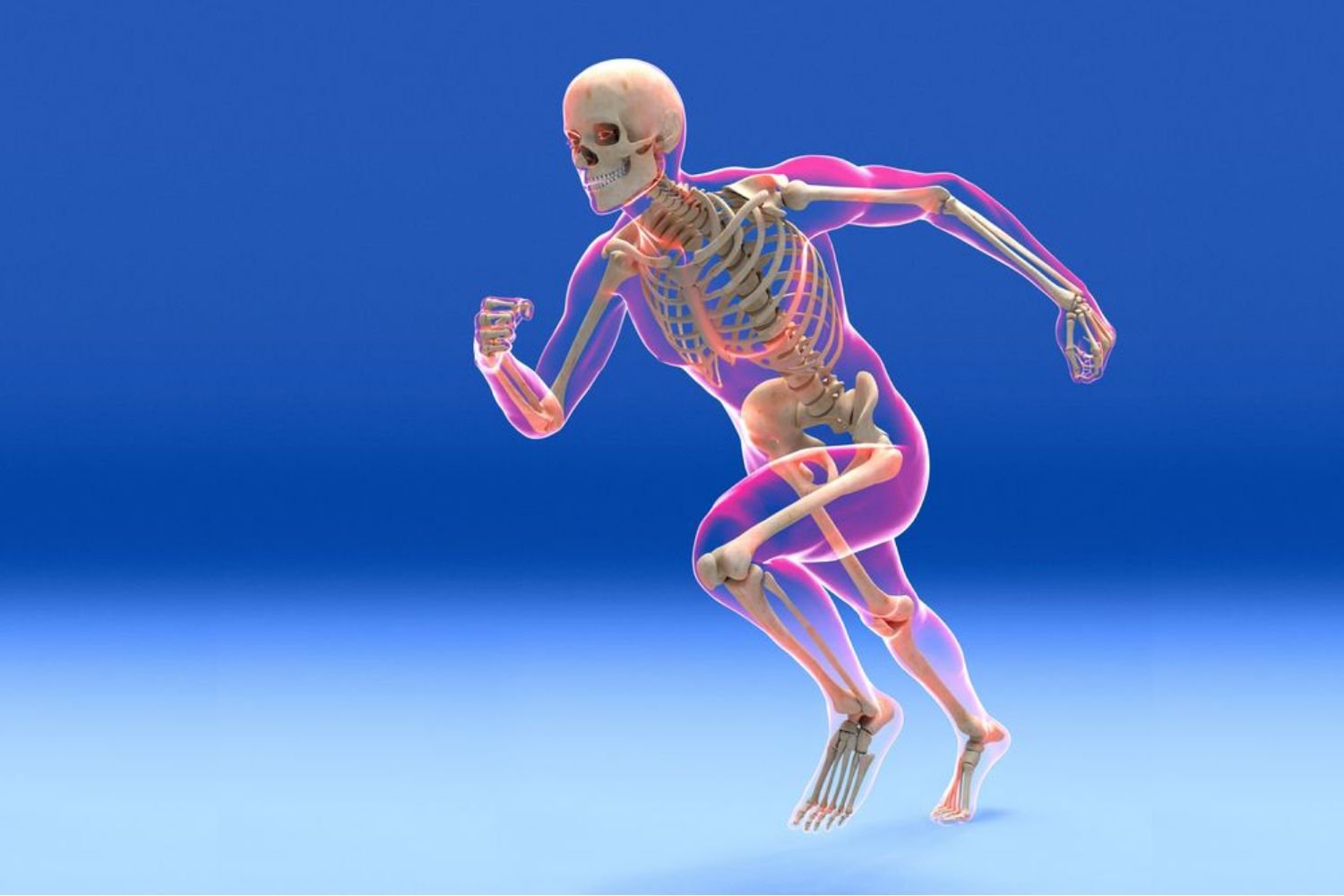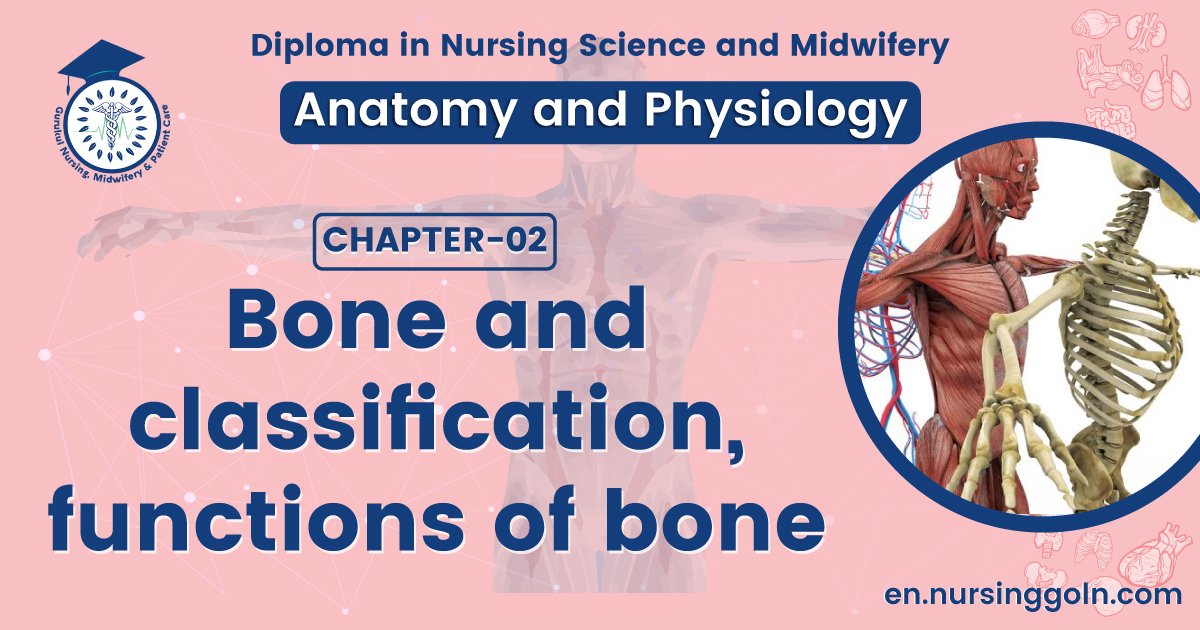Bone and classification, functions of bone – The course is designed for the basic understanding of anatomical structures and physiological functions of human body, musculoskeletal system, digestive system, respiratory system; cardiovascular system; urinary system, endocrine system, reproductive system, nervous system, hematologic system, sensory organs, integumentary system, and immune system.The aim of the course is to acquire knowledge and skills regarding anatomy and physiology.
Bone and classification, functions of bone

Bone is a specialized connective tissue composed of cells (osteogenic cells, osteocytes, osteoblasts and osteoclasts) and intercellular matrix, giving the framework of the body.
Bone is made up of
35% organic components
- Composed of cells, fibers, and organic substances
- Collagen-abundant
65% inorganic mineral salts
- Primarily calcium phosphate
- Resists compression
Classify bones on the basis of their shape and location.
Almost all the bones of the body may be classified into four main types based on their shape as…
- Long bones: have greater length than width and consist of a shaft and a variable number of ends. They are usually somewhat curved for strength. Long bones include those in the thigh (femur). leg (tibia and fibula), arm (humerus), forearm (ulna and radius), and fingers and toes (phalanges)
- Short bones: are somewhat cube-shaped and nearly equal in length and width. Examples of short bones include most wrist (carpal) and ankle (tarsal) bones.
- Flat bones: are generally thin, afford considerable protection, and provide extensive surfaces for muscle attachment. Bones classified as flat bones include the cranial bones, which protect the brain, the sternum (breastbone) and ribs, which protect organs in the thorax, and the scapulae (shoulder blades)
- Irregular bones: have complex shapes and cannot be grouped into any of the previous categories Such bones include the vertebrae and some facial bones
(Ref: J. TORTORA. The essentials of anatomy and physiology. 8″ edition. P-119)
Other types of bone are –
Pneumatic bone: Maxilla, Sphenoid, Ethmoid
Sesamoid bone: Sesamoid bones are small masses of bone that develop in tendons at points where great forces are applied to the tendons. The most obvious and largest sesamoid bone is the patella, or kneecap.

- Protection-
- Fused bones provide a brain case that protects this vital tissue
- Spinal cord is surrounded by vertebrae
- Rib cage protects vital organs
- Movement-
- Skeletal muscle attached to bones use the bones as levers to move the body
- Arrangement of bones and joints determine the movements possible

- Storage of minerals (Calcium and Phosphorous) and lipids (yellow marrow)
- Blood Cell Formation-
- Hematopoiesis occurs within the marrow cavities of the long bones
- The majority of hematopoiesis occurs in bones
- Support-
- Bones provide a hard framework that supports the body
- Bones provide support for internal organs
Read more:
